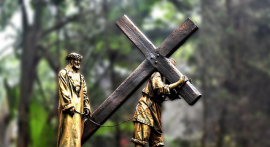A new survey shows that a quarter of Christian low-cost schools in Pakistan do not have potable drinking water facilities, and about half of them have no playgrounds and separate facilities for staff.
Many in the middle school do not even have a chair to sit on, and half of grades 2 and 4 classes are taught with another class.
The survey was carried out on 604 schools and was commissioned by Starfish Asia, an education charity which tries to mostly cater to Christian minority students but their schools also serve Muslim, Hindu, and Sikh children.
Director of the charity, Anser Javed's father was a sanitary worker in Karachi and his mother was a sweeper. His father died in a work accident, and his mother could not afford to care for him so sent him to an orphanage.
After getting educated, he became the principal of a school which saw rapid growth in the span of eight years when he led it. As the director of charity, he is passionate about educating children from low-income families.
He commissioned the survey on the low-cost schools for Christians in Pakistan because he has witnessed the struggles of the children first hand when he was growing up.
"My early years and the grace of God gave me a foundation of concern for the millions in our country who are born into poverty and deprivation. Thanks to my parents, the commitment of my guardians and a personal determination to succeed, I gained an education that prepared and equipped me for a life of dignity and service in society," Javed wrote in the survey report.
"In 2011 my wife and I joined Starfish Pakistan as Director and Academic Co-ordinator. We were convinced of the urgency and necessity of supporting education, especially for the least privileged and most downtrodden in our minority Christian community," he continued.
About 15 percent of the students were without notebooks or writing accessories in eighth grade, while 10 high schools did not have any blackboard. Only 23 percent of the high schools and 2 percent of the primary schools had internet access.
The most startling finding was that only 5 percent of the primary and middle schools had libraries.
Some 45 percent of the second graders did not have footwear, and student attendance was 52 percent on the day of survey.
As many as 64 percent of the schools did not receive funding from either government or churches, and only had meager school fees as the means to sustain the education of children.












